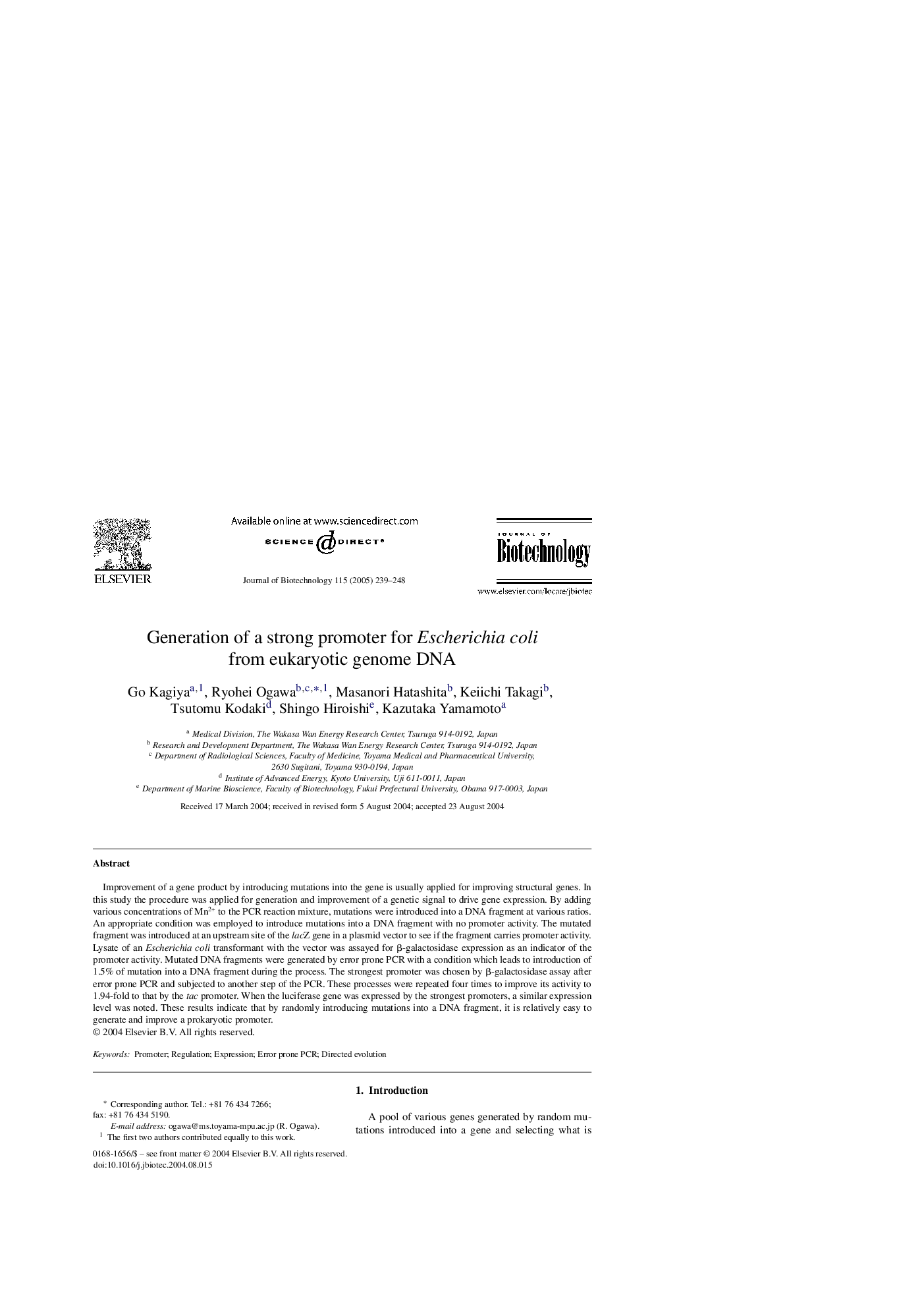| Article ID | Journal | Published Year | Pages | File Type |
|---|---|---|---|---|
| 9604475 | Journal of Biotechnology | 2005 | 10 Pages |
Abstract
Improvement of a gene product by introducing mutations into the gene is usually applied for improving structural genes. In this study the procedure was applied for generation and improvement of a genetic signal to drive gene expression. By adding various concentrations of Mn2+ to the PCR reaction mixture, mutations were introduced into a DNA fragment at various ratios. An appropriate condition was employed to introduce mutations into a DNA fragment with no promoter activity. The mutated fragment was introduced at an upstream site of the lacZ gene in a plasmid vector to see if the fragment carries promoter activity. Lysate of an Escherichia coli transformant with the vector was assayed for β-galactosidase expression as an indicator of the promoter activity. Mutated DNA fragments were generated by error prone PCR with a condition which leads to introduction of 1.5% of mutation into a DNA fragment during the process. The strongest promoter was chosen by β-galactosidase assay after error prone PCR and subjected to another step of the PCR. These processes were repeated four times to improve its activity to 1.94-fold to that by the tac promoter. When the luciferase gene was expressed by the strongest promoters, a similar expression level was noted. These results indicate that by randomly introducing mutations into a DNA fragment, it is relatively easy to generate and improve a prokaryotic promoter.
Related Topics
Physical Sciences and Engineering
Chemical Engineering
Bioengineering
Authors
Go Kagiya, Ryohei Ogawa, Masanori Hatashita, Keiichi Takagi, Tsutomu Kodaki, Shingo Hiroishi, Kazutaka Yamamoto,
